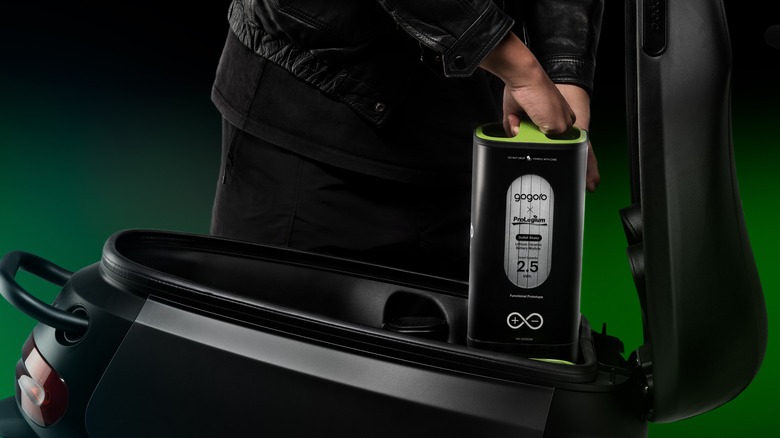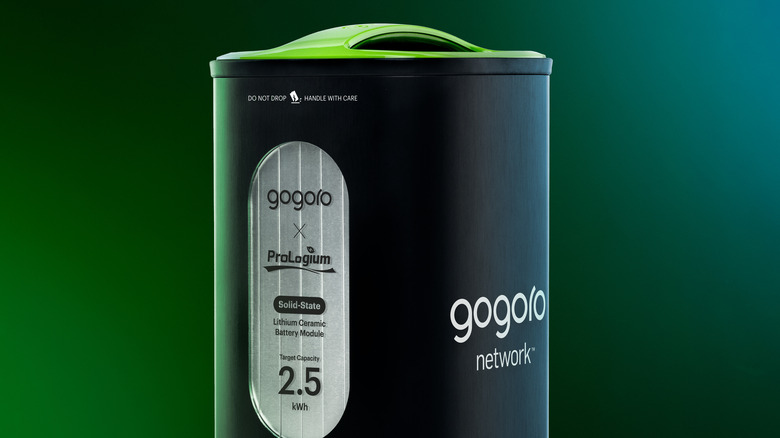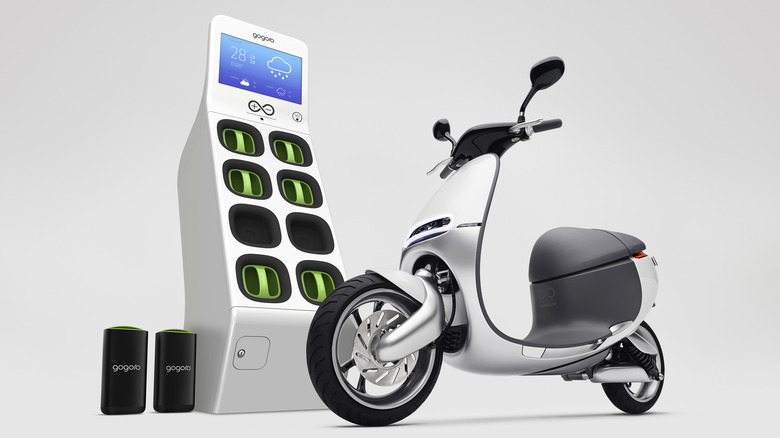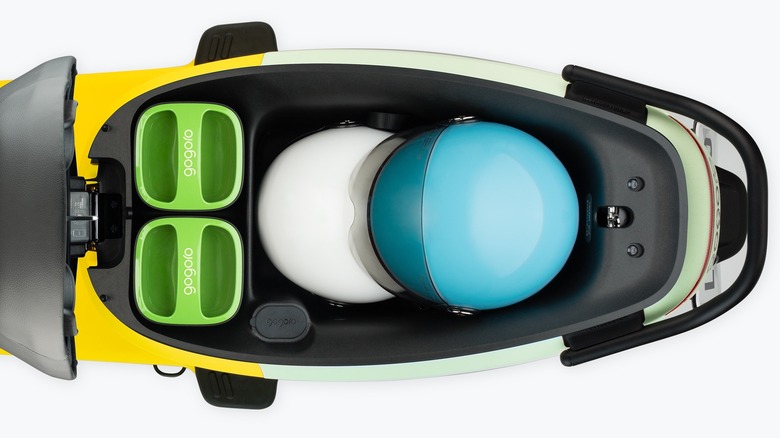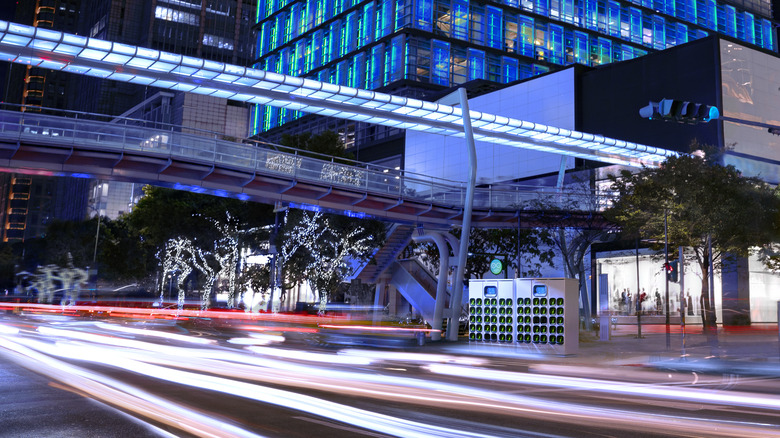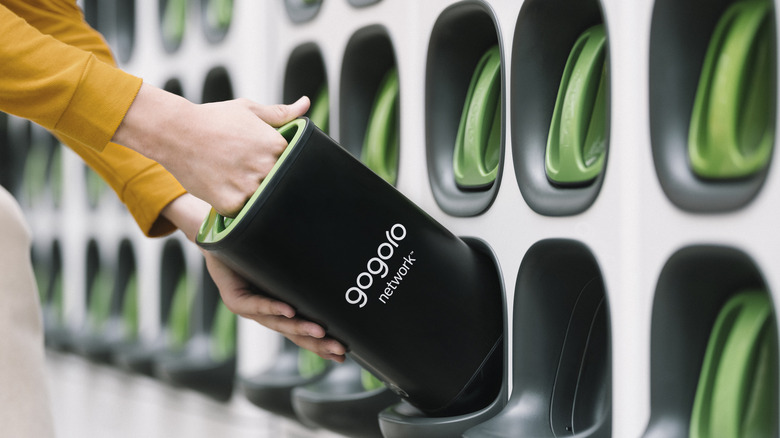This Is Gogoro's First Solid-State Battery: It Could Be An EV Game-Changer
Solid-state batteries may be widely expected to be the future of electric vehicle power, but it's Gogoro – better known for mass-market electric scooters – not the big automakers that has delivered the first, fully-functional prototype. Then again, when you make it your business to power lightweight two-wheel EVs, and offer riders a super-simple way to switch out their power packs rather than wait for a traditional recharge, there's a big incentive to position yourself at the cutting-edge of battery design.
It's easy to think of Gogoro as an electric scooter company. Or, if you take a step back from that, as an electric mobility company: after all, two-wheel manufacturers like Yamaha, AeonMotor, Yadeo, and DCJ all use its battery technology in their various models. Gogoro, though, prefers to think of itself as a power platform: one that just so happens to be most prevalent, right now, in urban mobility.
That prevalence has seen it just ship its one-millionth battery pack. It has around 2,200 GoStation locations – where the swappable batteries are exchanged – in Taiwan alone, more than 2,300 globally, and more than 450,000 riders.
Now, it's looking ahead to the next big change in battery technology. Solid-state batteries, with a lithium-ceramic module developed by partners ProLogium Technologies, promise to be more stable and pack more performance. It's the handiwork of almost a year's work, and the result is what Gogoro's Horace Luke, founder, chairman, and CEO, tells SlashGear is the world's first solid-state prototype swappable battery.
Backward compatible with Gogoro day 1
From the outside, though, you'd be forgiven for not immediately seeing much difference. Gogoro has intentionally stuck with its existing design: the design, in fact, it has been using since day one. These solid-state batteries are backward compatible with Gogoro-based bikes from day one, not to mention across the whole Gogoro network.
That's possible, Luke says, because each pack isn't just a battery but a swappable computer. Gogoro EV partners don't have to make any changes, because while the battery talks to the scooter's onboard systems for things like security, safety, and driving the dashboard display, it also handles its own thermal management, power output, and similar. In short, once the battery is slotted into place, the EV reads it and instantly knows how to work with it.
This is actually Gogoro's second battery evolution, The first was the switch from 18650 to 21700 cells, and indeed the company has a variety of designs – with a variety of cell suppliers, including LG, Samsung, and Panasonic – already in the wild. For riders, that transition has been pretty much invisible so far. The move to solid-state, though, could bring with it more obvious improvements.
Solid-state batteries are much more power-dense
Solid-state batteries' big advantage is power density. Gogoro's current lithium batteries pack approximately 1.7 kWh in each unit: eventually, the company says, it expects to take that to 2.5 kWh. More density gives Gogoro, and its vehicle-designing partners, more flexibility.
For example, if you want the same range from a battery as with the old cells, you could put a smaller amount of solid-state cells in the same design. That way you save on weight without compromising how far a rider can go: a totally full solid-state battery pack is around 20 pounds, versus around 23 pounds for the current design. Alternatively, if you fill the battery up, you get more range on a single charge.
However, density also opens the door to new vehicle designs. Gogoro's current batteries are typically found in two-wheelers, but there are new three-wheeler designs arriving too; they can accommodate up to four batteries at once. Problem is, anything more than that, and it just gets too heavy.
With power-dense solid-state batteries, though, you could potentially use four of the new design to get the same performance as six of the old. Or, for that matter, six new batteries for the performance which currently would require 8-10. "It really opens up the opportunity to explore," Gogoro's Luke suggests, including the long-requested electric four-wheelers some markets have been hoping for.
Different batteries for different riders
Before that can happen, of course, there are some hurdles to get past. Most obvious is the technology: Gogoro and its partner ProLogium Technologies has a working prototype battery, but not with the full 2.5 kWh power density. It's not ready for commercialization use, yet, either; Luke estimates that's likely to be the case in 2025 or 2026 at the earliest.
As it reaches the mass-market, meanwhile, Gogoro and its EV partners will need to make some decisions about positioning. After all, the solid-state batteries will be coexisting in the ecosystem with the current style: initially, Luke suggests, which riders get when they pull into a GoStation will likely depend on their subscription and how they use their EV. Those who need longer range, or who ride more aggressively, would be more likely to get a solid-state battery.
Beyond that, though, there's the potential for a "premium" subscription tier, guaranteeing performance much in the way that higher octane gas is available for internal-combustion sports cars. Greater power density could unlock faster two-wheelers, too, which would get the most potent batteries to deliver their speed promise.
Trust the big data
For that to work, Gogoro will need to make sure there are enough batteries in the ecosystem as a whole. After all, the best way to frustrate someone who has paid extra for the best performance is to tell them there's no solid-state battery available when they need to switch. So far, swapping capacity has been ensured by a mixture of progressively building out battery pack numbers – since each new two-wheeler sold adds new batteries to the ecosystem – and the magic of Gogoro's proprietary algorithm.
"There's an art to the ratio between what's on the vehicle and what's in the system and the network," Luke explains. "We build the network bandwidth with every vehicle we sell."
Part of that is a predictive algorithm, that looks at how each rider users their own EV. "We use big data to know where you go, where you swap," Luke says. "We know your living circle, we populate enough to know that the customer is going to be happy." By strategically adding enough battery swap capacity to certain key "hop points" – such as those between urban centers, where many riders pause – Gogoro can minimize frustration. That same mechanism, Luke insists, will keep solid-state battery users content with the experience, too.
It's a good time to be an EV-maker
Though Gogoro has its functioning prototypes now – which you can slot into a Smartscooter and ride around, no less – there's still some way to go before they're available to the public. Nonetheless, Luke is confident about the technology. "Solid-state will be the future of batteries," the chief exec insists, the lingering question is when not if.
To illustrate that, he points to the transition between spinning-platter hard-drives and solid-state drives. HDDs were always cheaper and more capacious, up until the point where "that cost catches up," Luke says. "The same thing is going to happen with batteries, except the density factor. The density is going to push us over faster, I think."
Helping there is renewed attention on fossil fuel use. Gogoro has already benefited from efforts in some markets to oust ICE-based two-wheelers from cities: in China for example, where Gogoro's local EV partners are expected to begin releasing their first scooters this spring, new regulations are expected to see around 270 million vehicles retired by 2025 because they don't meet upgraded safety and emissions standards. The currently rocketing price of gasoline isn't likely to hurt that momentum, either.
